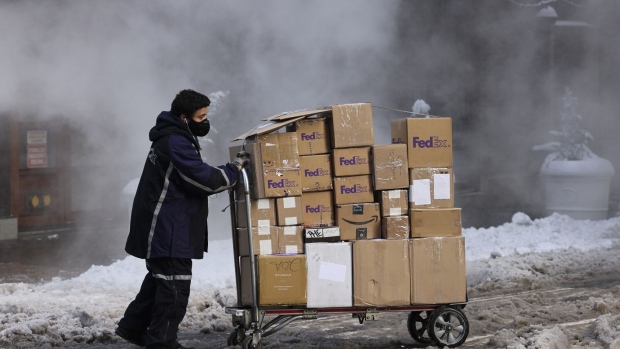Dec 17, 2020
FedEx disappoints as rising costs cool Wall Street's high hopes
, Bloomberg News

FedEx Corp. failed to keep up with Wall Street’s soaring expectations, as a jump in costs crimped quarterly results.
The adjusted operating margin was 7.4 per cent in the company’s fiscal second quarter, FedEx said in a statement Thursday. While significantly higher than a year ago, that trailed FedEx’s 8.5 per cent margin in the previous quarter.
Key Insights
- The cost squeeze is likely to spur investor doubts about FedEx’s ability to reap the rewards of record demand for package deliveries. The company’s biggest rival, United Parcel Service Inc., sparked a sell-off in its own shares in October after predicting pressure from higher expenses.
- In only a year, FedEx has gone from defending disappointing earnings to managing expectations after the coronavirus pandemic prompted a surge in online shopping. FedEx predicted Wednesday that strong demand would extend into next year, but it’s unclear how deliveries will be affected as coronavirus vaccines -- which FedEx is helping to distribute -- become widely available.
- While operating costs typically rise during the peak holiday season, the impact is even more pronounced this year because of record home deliveries. FedEx hired almost 30 per cent more temporary workers this year than last year and has rented more vehicles, driving up expenses in the Ground unit.
Market Reaction
- The shares fell 3.3 per cent US$282.60 after the close of regular trading in New York. FedEx has jumped 93 per cent this year, placing it in the top 10 of the S&P 500 Index.
FedEx again declined to provide guidance for its fiscal year 2021, which concludes at the end of May.
Adjusted earnings in the company’s fiscal second quarter rose to US$4.83 a share, FedEx said. That compares with the US$4.01 average of analyst estimates compiled by Bloomberg. Sales climbed 19 per cent to US$20.6 billion, while analysts predicted US$19.4 billion.
